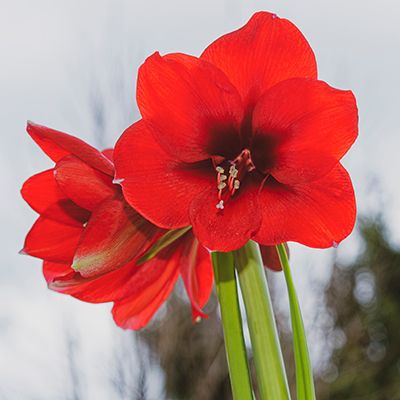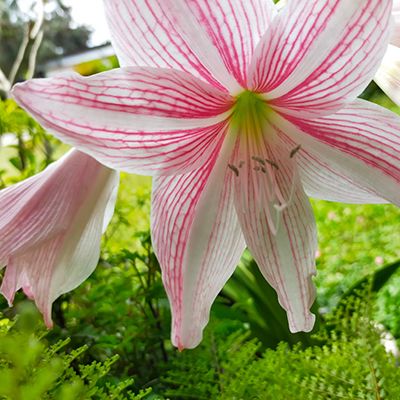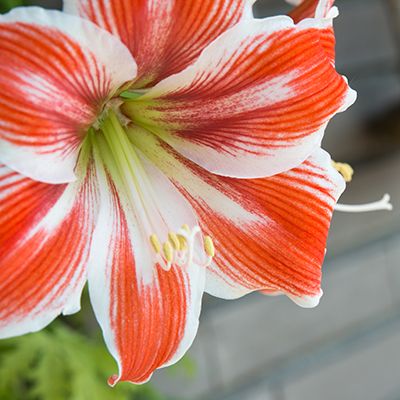


Winter Vegetable Gardening
General Information
In the Bay Area where we have mild winters, you can grow vegetables year round. Because the days are shorter and the nights cooler, fruit bearing vegetables (tomatoes, pepper, eggplant, cucumbers, melons, beans, etc.) will not produce any fruit. However, most leaf and root crops will grow and mature very well and provide a nourishing diet during the winter months.
On the Peninsula all vegetables will perform best in a well amended soil. Clay soils are rich soils but difficult to work with. To prepare our clay soils for vegetable gardening, sprinkle Gypsum at the rate of 10 pounds per 100 square feet, Master Nursery® Master Start at five pounds per 250 square feet and two to three inches of organic amendment such as Master Nursery® Gold Rush or Master Nursery® Forest Blend over the area to be planted. Rototill or dig all of these ingredients into the top six to eight inches of the planting bed. If raised beds are being used, they should be filled with a nursery mix and amended as above every spring or fall. One or two inches of organic amendment such as Master Nursery® Gold Rush or Master Nursery® Bumper Crop should be added to the garden area each year; either in the spring or fall. If the garden area has been previously used, skip the gypsum and Master Nursery® Master Start. Instead, fertilize with the vegetable fertilizer before adding the organic amendment. Soil should be kept moist (not wet); soaker hoses run 4 hours once or twice a week are very effective. All should be fertilized one and two months after planting with Master Nursery® Tomato and Vegetable Fertilizer, Gardner & Bloome Tomato, Vegetable & Herb Fertilizer or Happy Frog Tomato and Vegetable Fertilizer.
Varietals Information
Cole Crops
These include broccoli, cabbage, Brussels sprouts, cauliflower, collards, kale and kohlrabi. All require the same care and growing conditions. Each requires a slightly acid soil so be sure your fertilizer contains sulfur. All of these plants get quite large so if you use transplants from cell packs, they should be planted about 12 to 20 inches apart and can be started about Labor Day. Seeds should be planted two or three weeks earlier about six inches apart and eventually thinned as needed. Full sun all day is desirable but all will grow with at least six hours of full sun. Cauliflower heads are made their pearly white by tying the leaves over the head with a twist-tie. Cauliflower, cabbage and kohlrabi are cut off at ground level when they are harvested. A second crop can be planted in the space previously occupied and harvested later. Broccoli has one large head to be harvested and then the smaller side shoots are cut as they develop. Sprouts are harvested as they mature. If leaves from collards and kale are picked from the outside, the inner leaves will continue to mature and can be picked later.
Aphids may be a problem on some Cole crops but can be controlled with Safer® Brand Insect Killing Soap or a Pyrethrin spray. If tiny caterpillars show up from the white cabbage moth, control them with Spinosad.
Root Vegetables
These include beets, carrots, parsnips, turnips and rutabagas and are best planted from seed any time from Labor Day on. All require a loose, stone-free soil. Carrots are slowest to develop and take longest to mature. This is often discouraging to children learning to become gardeners. Plant seeds as directed on the package. Thinning is usually required. Beet and turnip ‘greens’ are cooked the same as spinach and are highly nutritious. Adding a couple of teaspoons full of vinegar to the water when beet roots are cooking intensifies the color.
Leaf Vegetables
These include lettuces, Swiss chard, spinach, bok choi and others. All of the leafy vegetables can be grown from seeds or transplants starting about Labor Day. Plant a dozen or so of the plants you have chosen in rows two weeks apart so you have a continuous flow of crops rather than an excess number all ripening at one time. Some gardeners will plant a row of transplants followed by rows of seeds at two week intervals to get an earlier transplant crop. Butter, bibb and romaine lettuces all grow well in the Bay Area. Butter and bibb lettuce are usually cut off at ground level ending those plants. Romaine can be harvested the same way or by picking the outer leaves and permitting the center leaves to continue growing. If lettuce becomes overly mature or goes dry while growing, it becomes bitter. A white milky sap present when the leaves are cut will warn you of bitter lettuce.
The first winter vegetable seedlings; become available about the first of September and then in increasing numbers as time passes. Seeds should be planted 3 to 4 weeks earlier.
Spinach, chard and bok choi are grown and treated the same as romaine lettuce. The old fashioned chard has green leaves and white stalks. Newer varieties have red, yellow or orange stalks and are sold under the name Bright Lights. All taste the same.
All leaf vegetables should be harvested when they are young and the leaves 10 inches or shorter. As the leaves get older, they become bitter.
As with all plantings; it is important to mulch the entire crop with one and a half to two inches of an amendment such as Master Nursery® Gold Rush or Master Nursery® Bumper Crop.
Leaf vegetables are subject to aphid attack but can be easily controlled with insecticidal soap or Pyrethrin spray. Chard and spinach may also fall victim to leaf miners. Control is to remove the leaves and dispose of them (do not compost) or spray with Monterey Garden Insect Spray.
The Cole crops are susceptible to cabbage moth larvae. If needed, spray with Monterey B.t. or Spinosad. (Both are harmless to all warm blooded creatures.)
Peas are an exception to the statement that winter vegetables do not produce fruit. (The pod is the fruit.) Peas are grown and treated the same as string beans (see Summer Vegetable Gardening Care Guide). String Beans grown on a support in the summer can then use the same support for peas in the winter. Snap peas, sugar peas, English peas, garden peas, dwarf peas and many varietals will all grow and produce in the Bay Area.